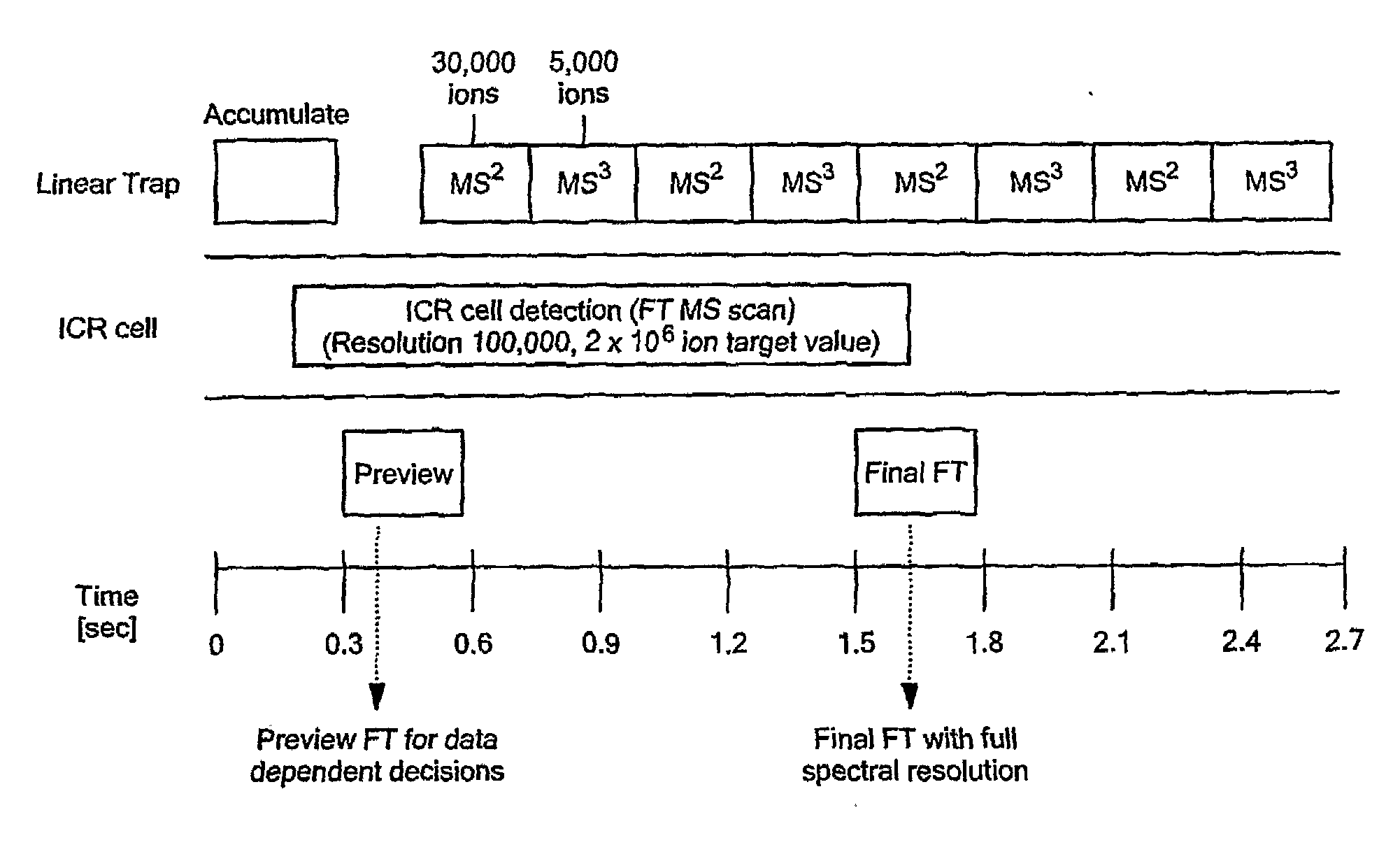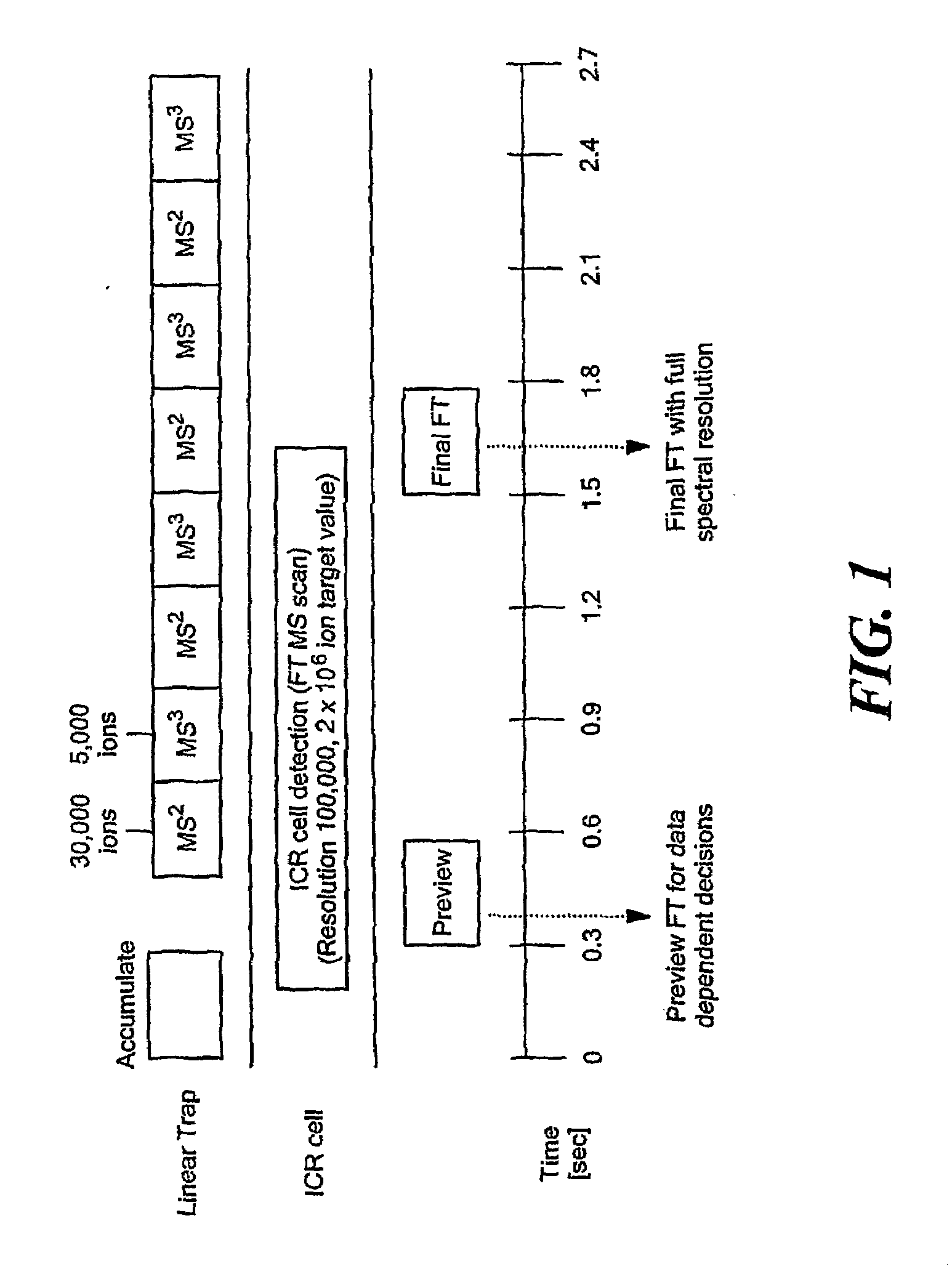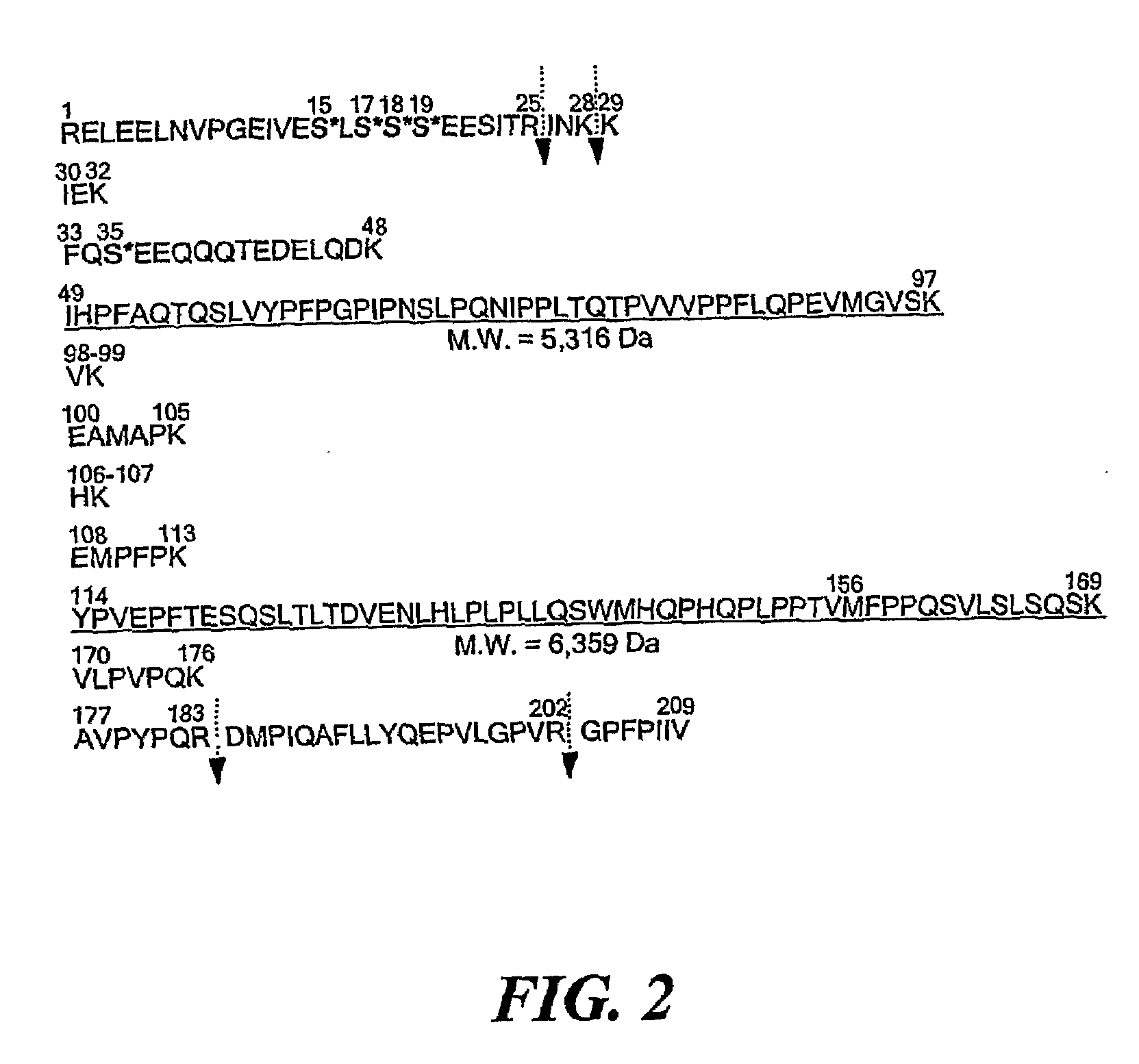Comprehensive Characterization Of Complex Proteins At Trace Levels
- Summary
- Abstract
- Description
- Claims
- Application Information
AI Technical Summary
Benefits of technology
Problems solved by technology
Method used
Image
Examples
Embodiment Construction
[0026]To overcome the limitations on protein size and heterogeneity and the long detection times required to achieve FTICR sensitivity in the top-down approach, we have developed a new intermediate and sensitive strategy called Extended Range Proteomic Analysis, a method that combines key features of the top-down and bottom-up approaches along with more productive use of the LTQ-FTMS instrument.
[0027]This new platform, for the first time, allows for the characterization of the complete structure of a protein present in a complex biological mixture. In the past, such analyses were only possible, in a limited sense, for a protein that had been extensively purified and was available in substantial amounts. Even in that situation, such an analysis was problematic in that one would not know if a particular set of modifications were indeed present in a given species. For example, if one characterizes a specific phosphorelation in a peptide and then in a separate analysis characterizes a s...
PUM
| Property | Measurement | Unit |
|---|---|---|
| Fraction | aaaaa | aaaaa |
| Mass | aaaaa | aaaaa |
| Mass | aaaaa | aaaaa |
Abstract
Description
Claims
Application Information
 Login to View More
Login to View More - R&D
- Intellectual Property
- Life Sciences
- Materials
- Tech Scout
- Unparalleled Data Quality
- Higher Quality Content
- 60% Fewer Hallucinations
Browse by: Latest US Patents, China's latest patents, Technical Efficacy Thesaurus, Application Domain, Technology Topic, Popular Technical Reports.
© 2025 PatSnap. All rights reserved.Legal|Privacy policy|Modern Slavery Act Transparency Statement|Sitemap|About US| Contact US: help@patsnap.com



